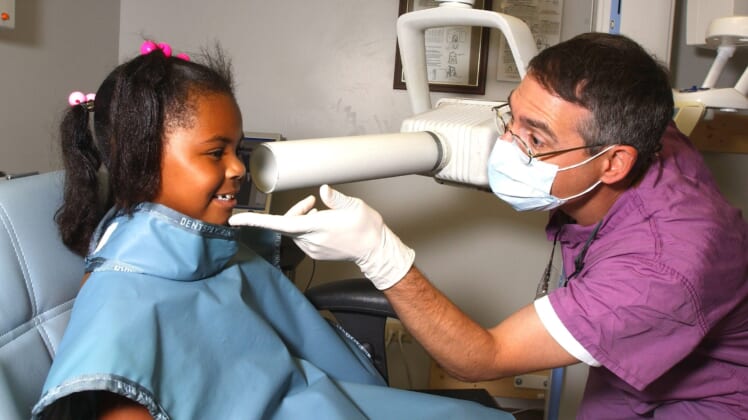How to Keep Your Kids Safe at the Dentist

After the tragic death of 3-year old Daleyza Hernandez Avila earlier this summer, the safety of children undergoing anesthesia for common dental procedures has attracted national attention. And this isn’t the first time in recent years that the safety of sedating children at the dentist’s office has made it into the spotlight. Back in 2012, a “Nightline” report highlighted the dangers of poorly trained dentists using sedation to increase profits and minimize inconvenience. Some dentists were found to use sedation for even routine cleanings and cavity treatments.
Despite the string of dentistry-related deaths that began to attract media attention years ago and the following series of recommendations from the American Dental Association, the recent tragedy in California highlights how important it still is for parents to be informed and ask questions.
First, ask your dentist why they recommend sedation for the procedure if you’re not sure that it’s necessary. Sedation may be warranted for a long, complex, or painful procedure or for particularly young and nervous patients. Many dentists don’t consider the risks of sedation to be worth the benefits for a routine cleaning, especially for very young patients with good home oral hygiene. Many pediatric dentists ease young children into routine cleanings as their comfort level allows. Very few children are too nervous for a routine cleaning when the procedure is approached with consideration for the child’s emotional state. Many offices use music, moveable TVs, and other props to help children relax and enjoy their visit as much as possible.
The Healthiest Part of an Avocado
If your child needs to be sedated, you can make the process safer by reviewing the ADA’s guidelines for parents and guardians. Some dentists only have a few days’ worth of training in oral sedation techniques and aren’t prepared or experienced enough to deal with emergencies. Below are the questions that the ADA recommends asking your child’s dentist before sedation.*
Prior to the procedure:
- Who will provide the preoperative evaluation of my child including their past medical history such as allergies, current prescription medications and previous illnesses and hospitalizations?
- What is the recommended time that my child should be without food or drink prior to the procedure (with the exception of necessary medications taken with a sip of water)?
- Will any sedation medication be given to my child at home prior to their coming to the office and, if so, how should they be monitored?
- What training and experience does the sedation/anesthesia provider have in providing the level of sedation or anesthesia that is planned for the procedure? Does this training and experience meet all of the standards of the ADA Guidelines for the Use of Sedation and General Anesthesia by Dentists?
- Does the staff assisting in the procedure have current training in emergency resuscitation procedures, such as Basic Life Support for Healthcare Providers, and other advanced resuscitation courses as recommended by the ADA Guidelines? Is this training regularly renewed?
- Does the state dental board require a special sedation/anesthesia permit or license that allows for the sedation/anesthesia provider to administer this specific level of sedation or anesthesia in the dental office?
During the procedure:
- In addition to the use of local anesthesia (numbing), what level of sedation or general anesthesia will be given to my child? Is it minimal sedation (relaxed and awake), moderate sedation (sleepy but awake), deep sedation (barely awake) or general anesthesia (unconscious)?
- How will my child be monitored before, during and after the procedure until the child is released to go home? Are the appropriate emergency medications and equipment immediately available if needed, and does the office have a written emergency response plan for managing medical emergencies?
After the procedure:
- Will the sedation/anesthesia provider give me instructions and emergency contact information if there are any concerns or complications after returning home?
This may seem like a daunting list, but even though the vast majority of children sedated for dental procedures in the US are unaffected by the procedure, the risks of anesthesia are real and are higher for young children than for adults. Your child’s dentist should be able to give you satisfactory answers to all of the above questions, and if they can’t, you may want to find another provider.
*These questions originally appeared on the ADA’s website. For more information about a variety of oral health topics, please visit www.MouthHealthy.org.
